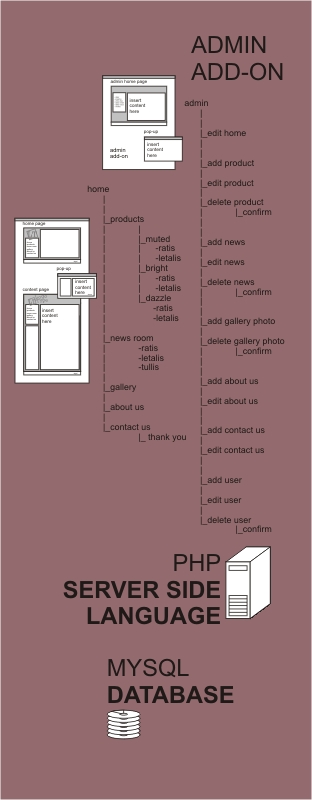 Websites need updating and some businesses employ a staff of tech wizards and content builders to do the job. Smaller business contract-out their content building, website design, production, and updating; while others prefer to be the master of their own.
Websites need updating and some businesses employ a staff of tech wizards and content builders to do the job. Smaller business contract-out their content building, website design, production, and updating; while others prefer to be the master of their own.
The problem with building your own site is: you probably don’t have a professional Art & Design toolbox, skill set, or sense of design. There is an alternative.
The sample SITE MAPs to the right show a public web site with ten pages; and an admin website with twenty-one hidden pages.
The hidden admin pages allow an authorized administrator to edit the ten public pages. The public pages were designed and produced first, and if done properly, the pages should have some elements like fonts styles, columns, and menu navigation already established. The admin pages hook-into the public pages and allow editing in specific areas of the web page – usually the main column of the web page. Authorized admin can “add, edit, or delete” content.
PHP is a very powerful server language; it delivers some very powerful server functions to the admin pages. A common PHP function collects the information from a “contact us” web page and e-mails the results to the sales department; another PHP function resizes uploaded photos and another allows the photos to be positioned left or right of the surrounding text. PHP functions can also reach into a database of information, search the database, sort the results, and present the results on a web page in milliseconds.
MYSQL is a relational database language. A website that has the admin site add-on also has a MYSQL database behind it. The database is where the textual and numerical information of the website is stored. Think of a database as very large warehouse where information is stored; the warehouse waits for a request, and upon getting said request the information is instantly retrieved, sorted, and delivered.
When compared to the public pages, the admin page count appears to triple. For each public page an administrator may “add, edit, or delete” public page content. There is some reuse of code that makes building an Admin website easier and the reward worth achieving: easy editing of the public pages. Admin pages are a serious business advantage, the pages put the website owner back to working at what they do best, running a business.
